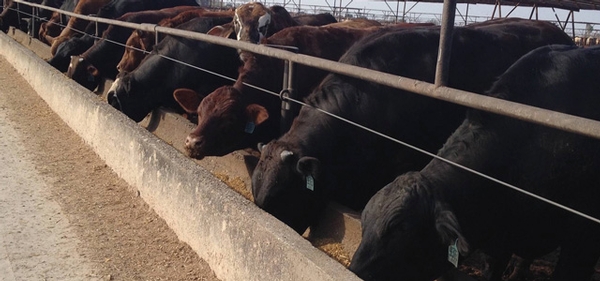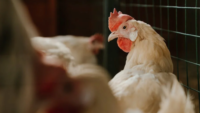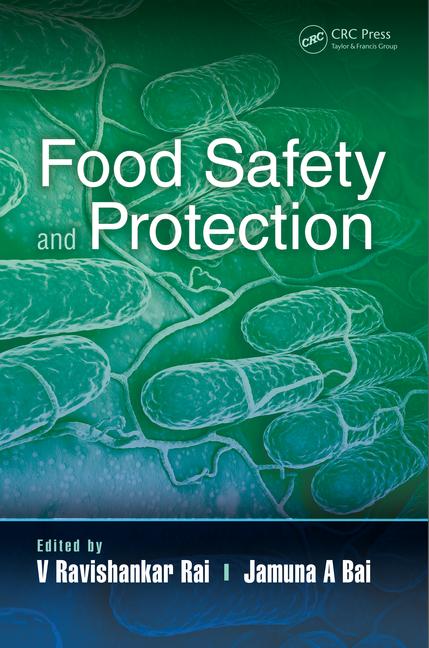State of an Industry: Salmonella and Bovine Lymph Nodes

Salmonella has been a hot topic for the past few years. In December 2013, the U.S. Department of Agriculture Food Safety and Inspection Service (USDA-FSIS) released the Salmonella action plan, which included 10 action items for the agency. Since then, USDA-FSIS has changed its Salmonella verification testing program for beef, initiated exploratory Salmonella testing in pork, modernized poultry inspection regulations, changed the sampling and performance standards for poultry and released the FSIS Salmonella Action Plan: A Year One Update. Many of the agency changes are designed to satisfy goals within the 10 action items of the plan. With USDA-FSIS taking steps to successfully execute the plan, it seems like an appropriate time to assess where the beef industry stands on item number 8 of the plan: Explore the Contribution of Lymph Nodes to Salmonella Contamination.
But first, let’s review why there is such an increased focus on Salmonella. A 2011 document from the U.S. Centers for Disease Control and Prevention (CDC) reported that an estimated 1 million cases of salmonellosis occur annually in the U.S., of which approximately 42,000 are laboratory confirmed. In other words, CDC estimates that for every reported case of Salmonella-related illness, there are 24 cases that are not diagnosed. Based on 2013 CDC data, Salmonella (34%) is second to norovirus (35%) in attributed foodborne outbreaks. Notwithstanding, Salmonella remains the leading cause of foodborne illness in the U.S. Of the 1.2 million estimated annual illnesses, approximately 360,000 are reported to be associated with products regulated by FSIS.
Salmonella in Beef: A Look at the Data
The most recent CDC annual surveillance report (2013 data) quantified 818 total outbreaks, 157 of which were caused by Salmonella and 5 due specifically to Salmonella in beef products. Illnesses associated with these outbreaks totaled 13,360 in all: 3,593 were salmonellosis and 210 were salmonellosis caused by beef. Overall, 14 product recalls were issued as a result of outbreaks in 2013, 3 of which were tied to Salmonella-related illnesses, with 1 of those involving beef products. Of 818 total outbreaks, 377 (46%) could be linked to a specific food item. Foods could be placed into 1 of 24 attribution categories for 210 (56%) of those outbreaks. By attribution category, the most commonly implicated food types were fish (24%), mollusks (11%), chicken (10%) and dairy (10%).
Attribution data also were made available in a recent interagency food safety report. This multi-agency endeavor summarized numerous years of surveillance data in an effort to categorize illness estimates by food source. Of the model-estimated illnesses, 77% were attributed to seeded vegetables (18%), eggs (12%), fruits (12%), chicken (10%), beef (9%), sprouts (8%) and pork (8%). Specifically, 47 outbreaks and 1,473 illnesses caused by Salmonella were attributed to beef products from 1998 to 2012. For comparison, single-year data from the CDC for 2013 show 5 percent of all reported foodborne disease outbreaks and 8 percent of all reported outbreak-associated illnesses were linked to beef. Overall, beef is the fourth-most-common cause of reported outbreak-associated salmonellosis in the U.S. (210 illnesses in 2013).
While national baseline data have continued to show a decrease in the incidence of foodborne illnesses related to Escherichia coli O157:H7, occurrence of Salmonella infections has remained virtually unchanged. This could lead one to question why the beef industry has not employed the same strategies to control Salmonella that were used for E. coli O157:H7. While that logic seems plausible, unfortunately, it is not that easy.
Salmonella in Lymph Nodes Too Diffuse to Eliminate
What makes controlling Salmonella in beef more of a challenge than controlling E. coli O157:H7? The answer is actually quite simple—location of the pathogen. To explain further, it is widely accepted that E. coli O157:H7 is inherent to the gastrointestinal tract of healthy cattle, and as such, the carcass surface is the most common area of contamination. Therefore, control has focused on utilizing effective sanitary dressing procedures and applying validated antimicrobial interventions to carcass surfaces. The beef industry has developed and implemented a number of antimicrobial intervention strategies to reduce E. coli O157:H7 on beef surfaces with great success—as evidenced by the consistent decline in beef-related E. coli illnesses over the years. Research has shown that these interventions are also effective at reducing Salmonella when present on the carcass surface; however, Salmonella is not found just on the surface. It has also been found inside bovine lymph nodes. Unfortunately, the Salmonella inside a lymph node would not be reduced by typical antimicrobial interventions applied to the carcass surface. While many lymph nodes are removed during normal harvest and fabrication procedures, others are embedded in the fat tissue surrounding muscles. These lymph nodes are generally referred to as peripheral lymph nodes (PLNs). Due to the number of PLNs and nature of the lymphatic system, complete removal of PLNs and associated lymphatic tissue is not an obtainable goal. Several of the larger PLNs are removed during normal fabrication practices, and researchers have determined that some of these larger PLNs tend to have a higher Salmonella prevalence than many of the smaller nodes. We have a lot to learn about the relationship between Salmonella and the lymphatic system in cattle, and due to possible influences at each point in the beef production chain, shedding light on this issue has become an industrywide effort.
What the Science Tells Us
Based on studies published by Sara Gragg and others from Texas Tech University and USDA’s Agricultural Research Service (ARS),[1,2] the beef industry is currently operating under three basic principles with regard to Salmonella prevalence in lymph nodes: (1) prevalence is higher in the lymph nodes of fed cattle compared with cull, (2) prevalence tends to be higher in the warmer months and (3) lymph nodes from cattle harvested in the southern region of the U.S. have a higher prevalence than northern or western regions (the eastern region was not evaluated in this study). These findings prompted another set of research questions: (1) When and how are cattle exposed to the microorganism? (2) Are there prevalence differences within a region? (3) Why the vast differences between cattle type?
Several researchers have focused their efforts on the possible routes of entry and types of exposure in which cattle may be challenged with Salmonella. Data from a study conducted by Ashley (Haneklaus) Arnold and colleagues at Texas A&M University have shown varying levels of Salmonella prevalence in lymph nodes obtained from carcasses sourced back to feedlots within a single geographic region,[3] which leads one to question what influences may be present in the feedlot environment that could positively or negatively impact Salmonella prevalence in cattle. Additionally, Matthew Taylor and other Texas A&M University researchers recently presented data from a study investigating the role bacteriophages might play in feedlots with lower rates of Salmonella prevalence;[4] based on their study findings, low levels of Salmonella prevalence could not be definitively attributed to bacteriophage activity.
Following the same line of questioning regarding the “when” and “how” of exposure, Tom Edrington and Pia Olafson with ARS have each published separate works describing the possibility of transdermal Salmonella infection through breaches of the skin by biting/sucking insects.[5–7] Edrington was able to develop a transdermal challenge model to mimic the biting of an insect.[5] This model allowed for the successful and predictable recovery of Salmonella from region-specific PLNs up to 8 days postchallenge. Oral Salmonella challenges have also been investigated, but results were less consistent than those from transdermal challenges. Additionally, data collected by Edrington[6] have shown that an unreasonably high level of Salmonella is required to produce positive PLNs via oral challenge, making feed contamination an unlikely route of exposure. Vertical (transplacental) transmission is one other possible method of exposure that has been recently investigated. Devin Hanson, working with others at Texas Tech University and ARS, recently presented data indicating that calves may be exposed to Salmonella in utero, sequestering the microorganism in their lymph nodes prior to birth.[8] This would mean that calves arrive at the feedlot already carrying the microorganism, which certainly poses a challenge.
As a follow-up to prevalence differences seen between cull and fed cattle, Tyson Brown and researchers at ARS looked into the impact of breed type on Salmonella prevalence.[9] Paired comparisons were made between Holstein versus native and Brahman versus native cattle originating from the same feedyards in the southwestern United States. Based on results from this study, breed type did not drive differences in Salmonella prevalence.
Several research studies have been conducted to determine the types of Salmonella typically found in the lymph nodes of cattle, and how many of which have a foodborne, human health consequence. In their 2011 annual report,[10] CDC outlined a list of the most common Salmonella serotypes associated with human illnesses in the U.S.—the top 10 appear in the following order: Enteritidis (16.5% of reported Salmonella infections), Typhimurium (13.4%), Newport (11.4%), Javiana (6.4%), I 4,[5],12:i:- (2.9%), Montevideo (2.6%), Heidelberg (2.4%), Muenchen (2.1%), Infantis (2.0%) and Braenderup (1.6%). Additionally, USDA-FSIS maintains a list of the 10 most commonly identified Salmonella serotypes found in meat and poultry verification samples.[11] The top three serotypes for FSIS are Kentucky, Enteritidis and Typhimurium. If focusing on ground beef verification sample results alone, Montevideo, Dublin and Typhimurium are the three serotypes most often found by FSIS. When evaluating results from recent studies, of 24 identifiable serotypes, Montevideo and Anatum were the Salmonella serotypes recovered most often from PLNs, by a wide margin. Typhimurium, Newport, Muenchen, Infantis and Braenderup also have been recovered from PLNs, but far less often. Overall, serotypes characterized from bovine lymph nodes do not have as much overlap with those responsible for foodborne illnesses as one might have initially thought. Nonetheless, Montevideo poses an obvious concern, and low rates of occurrence noted for other illness-causing Salmonella serotypes in PLNs by no means justify a reduced sense of urgency on this issue.
Mitigating Risks
Determining methods to mitigate risk of salmonellosis via contaminated lymph tissue in beef products is as important, if not more so, as understanding how cattle acquire and sequester the pathogen in the first place. In other efforts to determine possible preventive measures, preharvest interventions have been evaluated. Using direct-fed microbials has had somewhat mixed results. However, some pharmaceutical companies have developed vaccines and are exploring strategies for implementation to reduce Salmonella in cattle prior to harvest.
Future Directions
Although we are steadily increasing our knowledge in this area, many questions and unknowns remain. Researchers still have a number of strides to make before effective preharvest controls can be offered and successfully used to reduce Salmonella. Despite the unknowns, this is a key issue on the beef industry’s radar, and methods for better control are actively being pursued. Numerous researchers and beef industry members have agreed that we have three critical needs that still must be satisfied to gain some ground on this issue: (1) develop effective pre- and postharvest intervention practices; (2) attempt to identify a predictor to determine need of preharvest controls in specific feedyard environments; and (3) develop a best practices document for reducing preharvest Salmonella contamination.
It should be highlighted that to successfully and significantly reduce the number of salmonellosis cases credited to beef annually in the U.S., a comprehensive, industry-spanning approach will be required. This means all sectors of the cattle production chain—producers, harvest operators, further processors, retailers, foodservice managers and consumers—will have a responsibility and a role in managing Salmonella contamination. As an industry, we learned with E. coli O157:H7 that consumer education on the proper handling and preparation of beef plays a vital role in reducing beef-related illnesses, and that consumer outreach will need to be relied upon to gain control over our present situation.
Currently, members of the beef industry, academia and regulatory agencies are well attuned to the persistent and elusive nature of Salmonella in the lymph nodes of cattle. While great success has been noted with regards to E. coli-related illnesses over recent years, USDA-FSIS and CDC data show that the prevalence of Salmonella found in raw beef remains essentially unchanged, as is true for the occurrence of salmonellosis cases. Collectively, we face ongoing challenges in obtaining the appropriate knowledge to fully understand the acquisition of Salmonella by lymph nodes. Once we arrive at a full understanding of the relationship between Salmonella and beef, all sectors of our industry may be left asking one final question—“Now what?”—a question that is just as perplexing as our current state of knowledge on this issue. Ultimately, we may be left trying to manage environmental influences and biology; nonetheless, the beef industry has overcome great challenges in the past, and this should be no different.
Ashley Arnold, Ph.D., is a research assistant professor in the meat science section of the department of animal science at Texas A&M University. She conducts research, manages projects, finalizes reports and assists other faculty members in securing external funding for meat science research by writing grants. She also serves as safety officer for the department of animal science.
Kerri B. Gehring, Ph.D., is currently an associate professor in the meat science section of the department of animal science at Texas A&M University and the president/CEO of the International Hazard Analysis and Critical Control Points (HACCP) Alliance. She conducts HACCP/food safety training and has disseminated food safety information across the U.S. by serving on multiple panels and programs. Her dedication to food safety is recognized nationally and internationally.
References
1. Gragg, SE et al. 2012. Cross-sectional study examining Salmonella enterica carriage in subiliac lymph nodes of cull and feedlot cattle at harvest. Foodborne Pathog Dis 10:368–374.
2. Gragg, SE et al. 2013. Substantial within-animal diversity of Salmonella recovered from lymph nodes, feces and hides of cattle at slaughter. Appl Environ Microbiol 79(15):4744–4750.
3. Haneklaus, AN et al. 2012. Salmonella prevalence in bovine lymph nodes differs among feedyards. J Food Prot 75(6):1131–1133.
4. Yicheng, X et al. 2015. “Prevalence and identification of Salmonella bacteriophages in the beef feedlot environment” (Proceedings of the Beef Industry Safety Summit, Dallas, TX).
5. Edrington, TS et al. 2013. Development of challenge models to evaluate the efficacy of a vaccine to reduce carriage of Salmonella in peripheral lymph nodes of cattle. J Food Prot 76(7):1259–1263.
6. Edrington, TS et al. 2013. Development of a transdermal Salmonella challenge model in calves. J Food Prot 76(7):1255–1258.
7. Olafson, P et al. 2014. Survival and fate of Salmonella enterica serovar Montevideo in adult horn flies. J Med Entomol 51.
8. Hanson, DL et al. 2015. “Vertical transmission of Salmonella in dairy cattle” (Proceedings of the Beef Industry Safety Summit, Dallas, TX).
9. Brown, TR et al. 2015. “Investigation into possible breed differences in Salmonella prevalence in the peripheral lymph nodes of cattle” (Proceedings of the Beef Industry Safety Summit, Dallas, TX).
10. www.cdc.gov/ncezid/dfwed/PDFs/salmonella-annual-report-2011-508c.pdf.
11. www.fsis.usda.gov/wps/wcm/connect/180fc804-0311-4b4d-ae42-d735e8232e1c/Salmonella-Serotype-
Annual-2012.pdf?MOD=AJPERES.
Looking for a reprint of this article?
From high-res PDFs to custom plaques, order your copy today!








